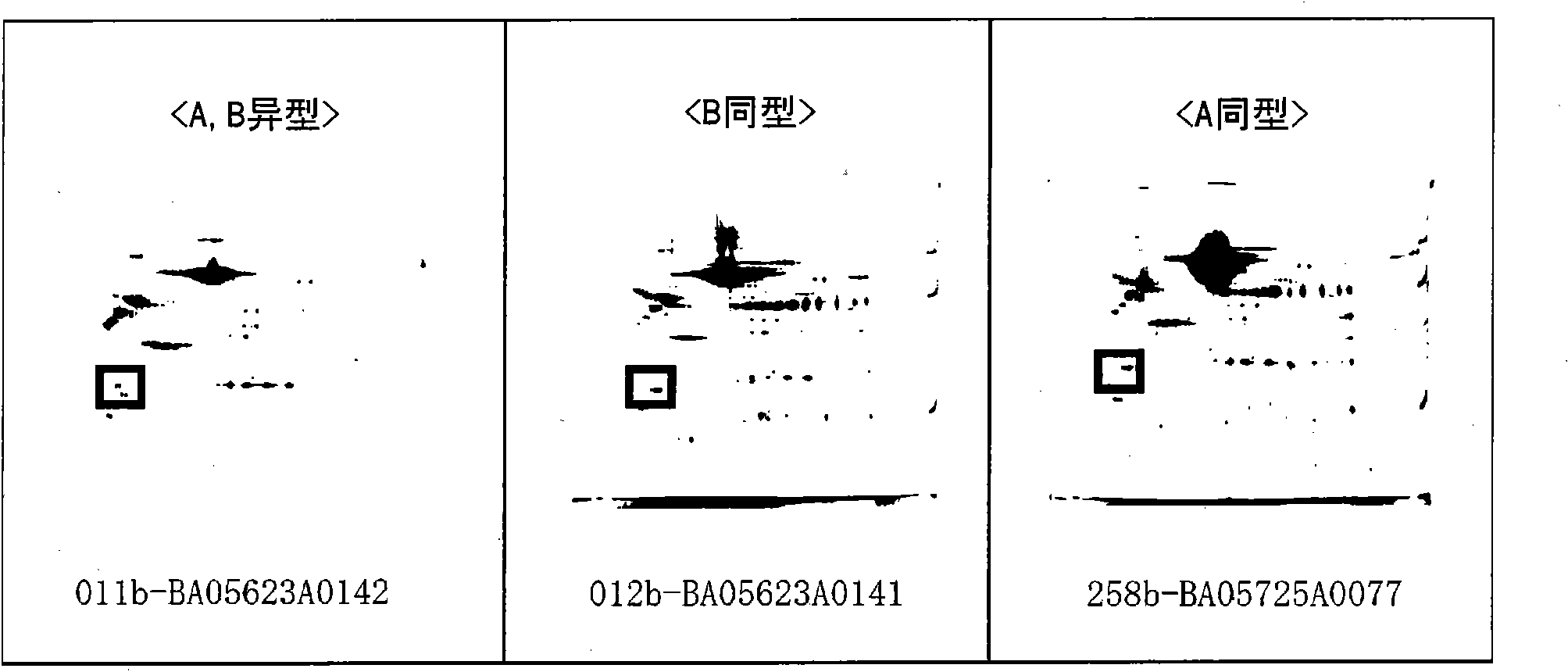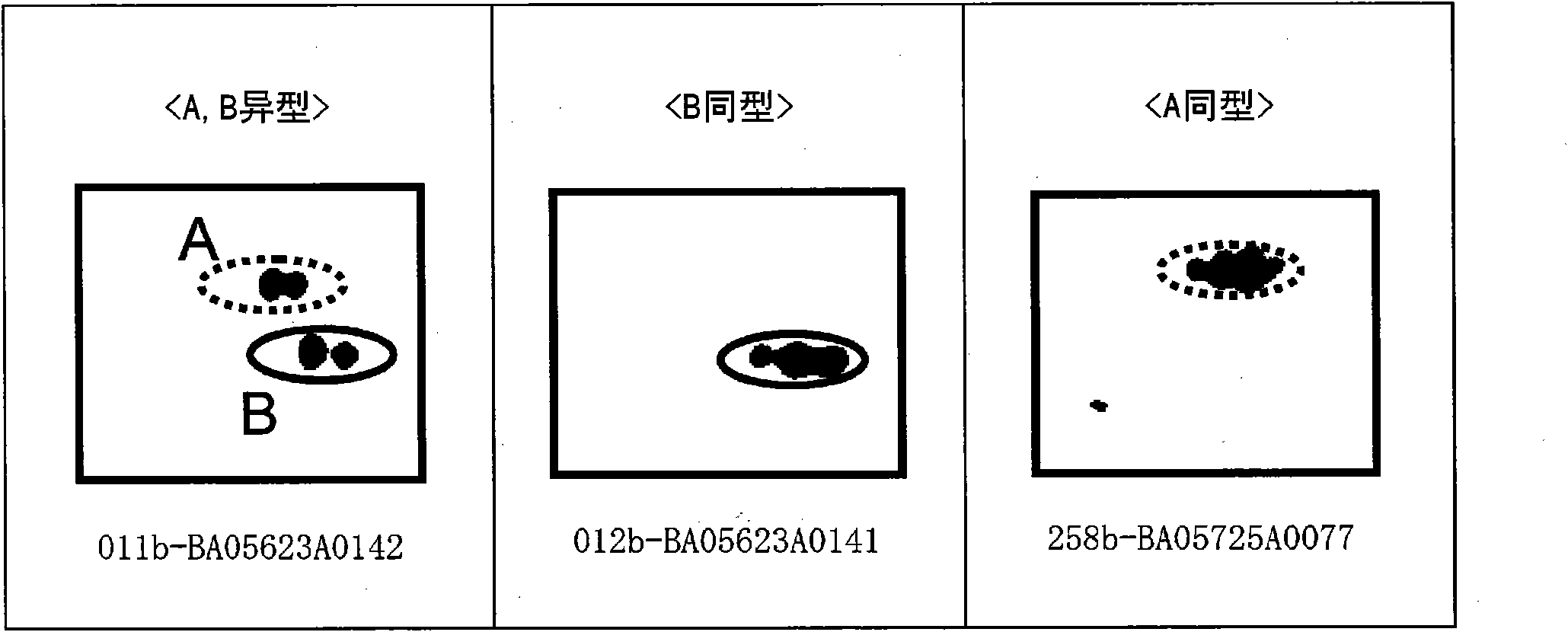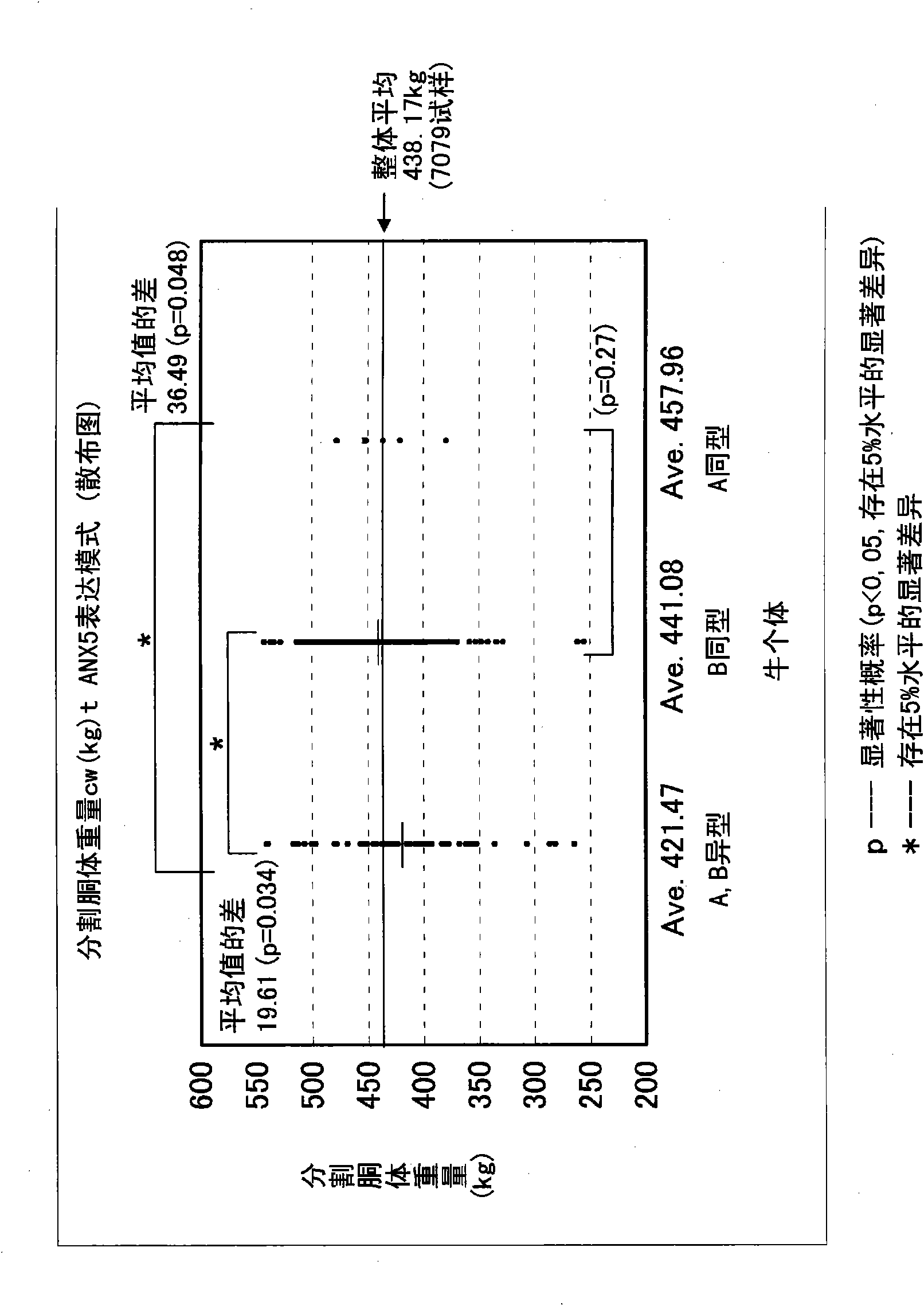Method of discriminating bovine, thus discriminated bovine and kit for discriminating bovine
A protein and wild-type technology, applied in the direction of food testing, biological testing, anti-animal/human immunoglobulin, etc., can solve the problems of backward application of proteomics analysis, achieve life improvement, life and stability, and increase production efficiency Effect
- Summary
- Abstract
- Description
- Claims
- Application Information
AI Technical Summary
Problems solved by technology
Method used
Image
Examples
Embodiment 1
[0063] 1. Exploration of proteins available as biomarkers
[0064] Extract the total protein (proteome) from multiple bovine white adipose tissue samples whose pedigree and meat quality are known, and search for proteins that can be used as biomarkers by correlating the proteome with the meat quality and other traits of each individual. Its details are as follows. In addition, unless otherwise stated, "%" below means "volume%".
[0065] (1) Protein extraction
[0066] As a sample of bovine white adipose tissue, white fat collected from individual Hida cattle whose economic characteristics such as pedigree, cut carcass weight, loin area, and pork belly thickness have been clarified, and which has been frozen and stored at the Livestock Experimental Field in Gifu Prefecture, Japan Tissue samples Approximately 150 sample materials.
[0067] Whole protein was extracted as described below. First, 1 ml of extraction solution (a solution formed by adding a proteolytic enzyme inhi...
Embodiment 2
[0084] 2. Identification of Proteins
[0085] For including figure 2 A plurality of protein spots (approximately 350 spots), including the protein spot surrounded by a circle, were extracted from the gel stained by two-dimensional electrophoresis, and identified by mass spectrometry. Specifically, follow the steps below.
[0086] (1) Extract from the gel
[0087] Use small tweezers to cut out the spots containing specific proteins from the gel, put the cut gel into the wells of a 96-well MTP plate, and put it in 0.1ml of decolorizing solution A (using methanol and 100mM ammonium bicarbonate aqueous solution, etc. 3 soaks of 20 minutes in the mixed solution). Remove the decolorizing solution A and soak in 0.1 ml of 100% acetonitrile for 5 minutes. The acetonitrile was evaporated and the gel was completely dried. Add 30 μl of trypsin solution (0.83 μg / ml trypsin (Sequencing grade Trypsin, manufactured by Promega), 25 mM ammonium bicarbonate) to the dried gel, and react ove...
Embodiment 3
[0093] 3. Data Analysis
[0094] Quantitative values of protein spots obtained from two-dimensional electrophoresis results were managed using a laboratory information management system for proteomics analysis (BIOPRISM, manufactured by NEC Corporation), and were combined with various trait data (individual data, pedigree data, etc. 7 items, meat quality data 22 items) together to make a database, and analyze the correlation between each data.
[0095] In addition, the data of MS spectra and MS / MS spectra obtained by mass spectrometry were input into MASCOT (Matrix Science Corporation), for Swiss Prot (http: / / au.expasy.org / sprot / ) and NCBInr (http: / / au.expasy.org / sprot / ) and other public protein sequence databases, conduct peptide mass fingerprint (PMF) analysis, MS / MS ion search (IonSearch) analysis, and try to identify proteins. And, input the obtained results into the aforementioned database.
[0096] The data analysis results of the database show that the protein spot...
PUM
| Property | Measurement | Unit |
|---|---|---|
| Molecular weight | aaaaa | aaaaa |
| Molecular weight | aaaaa | aaaaa |
Abstract
Description
Claims
Application Information
 Login to View More
Login to View More - R&D
- Intellectual Property
- Life Sciences
- Materials
- Tech Scout
- Unparalleled Data Quality
- Higher Quality Content
- 60% Fewer Hallucinations
Browse by: Latest US Patents, China's latest patents, Technical Efficacy Thesaurus, Application Domain, Technology Topic, Popular Technical Reports.
© 2025 PatSnap. All rights reserved.Legal|Privacy policy|Modern Slavery Act Transparency Statement|Sitemap|About US| Contact US: help@patsnap.com



